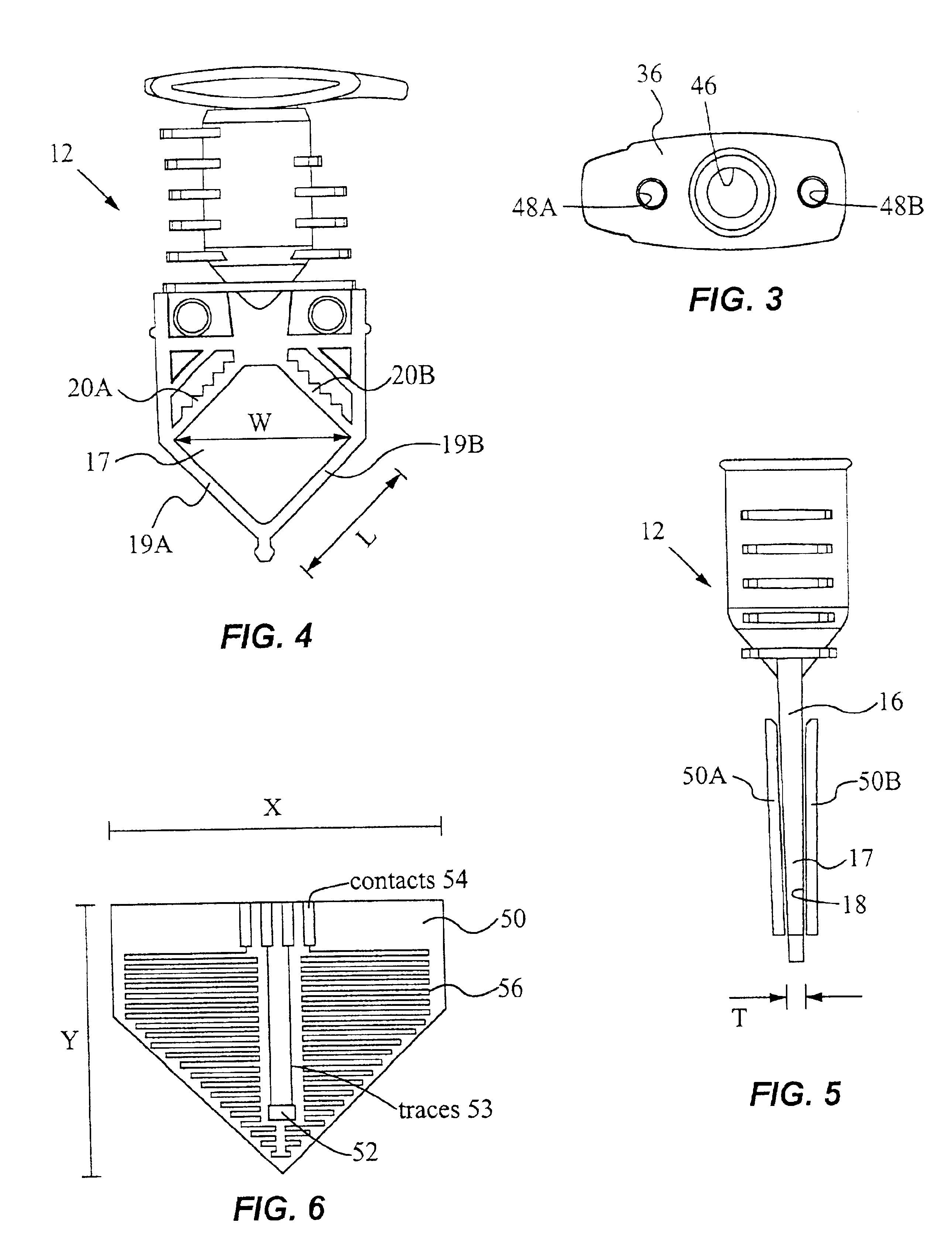Apparatus for analysis of a nucleic acid amplification reaction
a nucleic acid amplification and apparatus technology, applied in the field of apparatus for analysis of nucleic acid amplification reactions, can solve the problems of inability to accurately measure the number of dna targets, inability to accurately measure the amount of product generated, and poor reproducibility of endpoint measurements
- Summary
- Abstract
- Description
- Claims
- Application Information
AI Technical Summary
Benefits of technology
Problems solved by technology
Method used
Image
Examples
example 1
External Standards
[0223]Referring to FIG. 20, test samples and calibration samples are amplified in separate reaction vessels 12 at separate reaction sites. In this example, there are sixteen heat-exchanging modules 60 (arranged in two rows of eight). Each heat-exchanging module provides a reaction site for amplifying a sample contained in a reaction vessel. The eight heat-exchanging modules in the first row are designated reaction sites A1-A8 and the eight heat-exchanging exchanging modules in the second row are designated reaction sites B1-B8. Eight calibration samples (standards) are amplified at sites A1-A8 and eight test samples are amplified at sites B1-B8. Each test sample is mixed with the necessary reagents and fluorescent probes to amplify and detect up to three different target nucleic acid sequences. Each calibration sample contains a known starting quantity of three calibration nucleic acid sequences corresponding to the three target nucleic acid sequences in the test s...
example 2
Quantitative Internal Controls
[0227]This example is similar to example 1, except that in example 2 each threshold value determined for a nucleic acid sequence is normalized by the threshold value determined for a quantitative internal control. Referring to FIG. 20, test samples and calibration samples are amplified in separate reaction vessels 12 at separate reaction sites. Eight calibration samples (standards) are amplified at sites A1-A8 and eight test samples are amplified at sites B1-B8. Each test sample is mixed with the necessary reagents and fluorescent probes to amplify and detect up to two different target nucleic acid sequences. Each calibration sample contains a known starting quantity of two different calibration nucleic acid sequences corresponding to the two target nucleic acid sequences in the test samples. In addition, a known quantity of a quantitative internal control (QIC) is placed in each test and calibration sample. The quantitative internal control is a nuclei...
example 3
Internal Standards
[0231]In this example, the calibration nucleic acid sequences (standards) are amplified together in the same reaction vessel with the unknown quantity of a target nucleic acid sequence in a test sample. Referring to FIG. 20, eight reaction vessels containing reaction mixtures are placed at sites A1-A8. The reaction mixture in each vessel comprises (1) a test sample mixed with the necessary reagents and fluorescent probes to amplify and detect a target nucleic acid sequence in the test sample; (2) a first internal standard comprising a known quantity of a second nucleic acid sequence different than the target sequence in the test sample, as well as the necessary reagents and probes to amplify and detect the second nucleic acid sequence; and (3) a second internal standard comprising a known quantity of a third nucleic acid sequence different than the target sequence in the test sample and the second nucleic acid sequence, as well as the necessary reagents and probes ...
PUM
| Property | Measurement | Unit |
|---|---|---|
| thickness | aaaaa | aaaaa |
| thickness | aaaaa | aaaaa |
| thickness | aaaaa | aaaaa |
Abstract
Description
Claims
Application Information
 Login to View More
Login to View More - R&D
- Intellectual Property
- Life Sciences
- Materials
- Tech Scout
- Unparalleled Data Quality
- Higher Quality Content
- 60% Fewer Hallucinations
Browse by: Latest US Patents, China's latest patents, Technical Efficacy Thesaurus, Application Domain, Technology Topic, Popular Technical Reports.
© 2025 PatSnap. All rights reserved.Legal|Privacy policy|Modern Slavery Act Transparency Statement|Sitemap|About US| Contact US: help@patsnap.com



